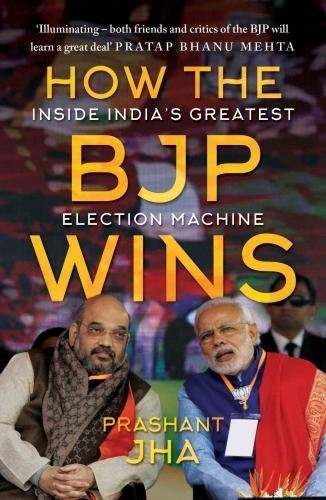Psephologists and political analysts have attempted to elaborate the ‘hows’ and the ‘whys’ of the BJP winning more than half of the State elections held subsequent to the 2014 Lok Sabha win. There have been many attempts to uncover the mystery during each election, but the actual answer has remained beyond the terms of ‘anti-incumbency’, ‘promise of development’, ‘promises of achhe din’ etc. As the title suggests, this book aims at providing a comprehensive answer to that question, and in doing so, attempts to understand the tactics and methods which the BJP employed to win the 2014 elections and beyond. Prashant Jha does not delve into each State election after 2014, but outlines the roles played by the Party’s top leadership, right down to the booth level worker. The introduction section sets the expectations of the reader high right at the beginning and also outlines what the book does not cover i.e., ‘what the BJP does after winning the election’. And what it promises, it mostly delivers.
The book manages to provide a wide spectrum of insights from the Party’s most influential leaders, to State campaign managers, to voters, to observers and journalists on the field.
Set in the background of the 2017 Uttar Pradesh (U.P.) elections, the author narrates incidents and closely follows the path taken by the BJP to secure a winning streak subsequent to May 2014. With a professional advantage of having covered elections in the region, and having seen the events unfolding up-close, Jha makes good use of interview data, anecdotes and popular opinion, to present his points. The book is divided into detailed chapters highlighting Modi’s persona and Shah’s strategic leadership skills along with the social engineering which went behind the consolidation of the Hindu vote for the Party. The section on the ‘Modi Hawa’ details the Modi appeal not only with respect to his persona but also in contrast to Rahul Gandhi. To showcase this, the chapter outlines individual achievements, rally speeches, style of working, and the work done by the two leaders. It is important to insert a caveat here that the author does not go into much specificity with respect to Rahul Gandhi but manages enough evidence for a trustworthy comparison. This section enhances the readers’ understanding of Modi’s mass appeal, during and after demonetization, and how the Prime Minister managed to evoke faith by mirroring the common man’s plight in his speeches. However, for someone who follows the Indian elections and events closely, this section does not come up with anything new. Cases in point: the elaboration that BJP worked upon its social welfare schemes based on the framework already put in place by the Congress, and there was no opposition and no Prime Ministerial candidate from the Congress, to challenge Narendra Modi, added to Modi’s appeal.

